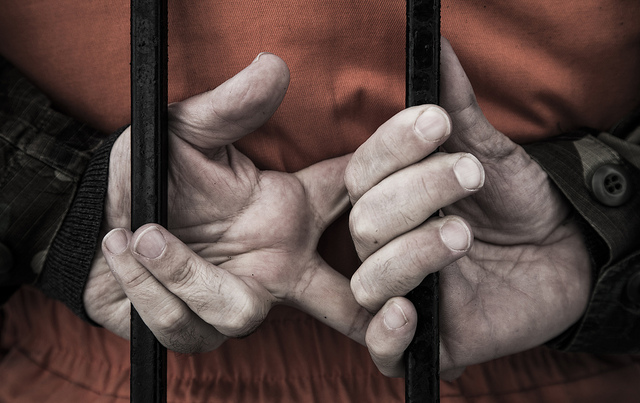Like this article? rabble is reader-supported journalism. Chip in to keep stories like these coming.
Foreign Affairs Minister Stéphane Dion recently declared that Canada “should join this important protocol” — the United Nations Protocol Against Torture. More than a decade after it was initially passed, Canada is still sitting on the bench and watching case after case of torture without having the courage to stand up and sign the protocol.
It may be politically “easy” to denounce torture when it is practiced by other governments, especially if they don’t have enough international clout, but what about the torture happening in Canada or the torture “subcontracted” by Canada to other regimes abroad?
Is Canada ready to distance itself from it, forcefully denounce it, and prosecute those who practice it? For years, Canada didn’t budge and didn’t sign the protocol. Today, there are signs that the government is considering changing this shameful attitude, so let’s see how they can do it correctly.
Four main issues will serve as tests for this promised change.
1. Solitary confinement
Year after year, we hear about tragic cases of Canadians or refugees dying in Canadian detention centres or prisons while they are held in solitary confinement. The UN considers solitary confinement a form of torture when the detention lasts more than 15 days or when the detainee is a youth or someone suffering from mental health issues. Despite this and despite all the reports by human rights groups, experts, commissions and ombudsmen, Canada continues using solitary confinement in federal and provincial prisons and no concrete action has been taken to ban it.
2. Omar Khadr
The U.S. arrested Omar Khadr in Afghanistan during the first years of its so-called “war on terror” and accused him of killing an American paramedic. Despite the fact that he was only 15 years old and suffering from injuries, Canada left its own citizen in Guantanamo, one of the most shameful prisons in the history of the humanity, where solitary confinement, waterboarding, sleep deprivation, psychological torture and force-feeding have been used, and still are.
Moreover, Canadian officials visited and interrogated Omar Khadr without the access or presence of his lawyers. The Supreme Court of Canada stated that Omar Khadr’s constitutional rights were violated. To this day, no Canadian government has admitted any wrongdoing in the abuse, torture and indefinite detention of Omar Khadr, all of them relying on the false perception that public opinion is not sympathetic to him. This dark chapter in our history should be brought to light and Canada should provide a mea culpa for participating in the torture of one of its own citizens.
3. Abdullah Almalki, Ahmed El Maati and Muayyed Nureddin
These three Canadian men were tortured in the same Syrian dungeon. Justice Frank Iaccobucci declared in his report that they were tortured because Canada shared erroneous information about them.
Canada should keep in mind that “subcontracting” torture doesn’t make us less guilty. The cases of these three men are still in the Canadian justice system. Canada is probably still paying many lawyers to fight these cases and delay accountability. It is time to apologize to the victims of torture and show that we wholeheartedly denounce torture even when it is outside our doors.
4. Torture memos
Very quietly, Minister of Public Safety Ralph Goodale promised in January 2016 that he would include Canadian “torture memos” in the upcoming national security review. In 2011, Vic Toews, the Public Safety Minister at the time, sent ministerial directives to the Canadian Security Intelligence Service (CSIS), giving them the authority to use and share information that was likely extracted through torture. Since then, these directives have been called “torture memos” by human rights groups.
This act prevents Canadians who have been subjected to torture abroad to get compensation or any form of redress in Canadian courts. One of the best-known and most tragic cases is the case of Zahra Kazemi, who died in Iranian prison and whose family tried without success to prosecute those responsible for her death from Canada. There are other cases of Canadians who suffered abuse and torture in other countries and who would never see their torturers arrested or brought to justice. The State Immunity Act is an obstacle to the pursuit of justice here and aboard.
These issues and more (we shouldn’t forget the Afghan detainee issue and the questions still lingering about the role of Canada in their torture) represent a litmus test to clearly demonstrate whether Canada is really committed to distancing itself from torture and embracing the UN Protocol against Torture — or it is making another empty promise that will be half fulfilled or someday forgotten.
This column was first published in the Huffington Post.
Monia Mazigh was born and raised in Tunisia and immigrated to Canada in 1991. Mazigh was catapulted onto the public stage in 2002 when her husband, Maher Arar, was deported to Syria where he was tortured and held without charge for over a year. She campaigned tirelessly for his release. Mazigh holds a PhD in finance from McGill University. In 2008, she published a memoir, Hope and Despair, about her pursuit of justice, and recently, a novel about Muslim women, Mirrors and Mirages. You can follow her on Twitter @MoniaMazigh or on her blog www.moniamazigh.com
Photo: Justin Norman/flickr
Like this article? rabble is reader-supported journalism. Chip in to keep stories like these coming.



